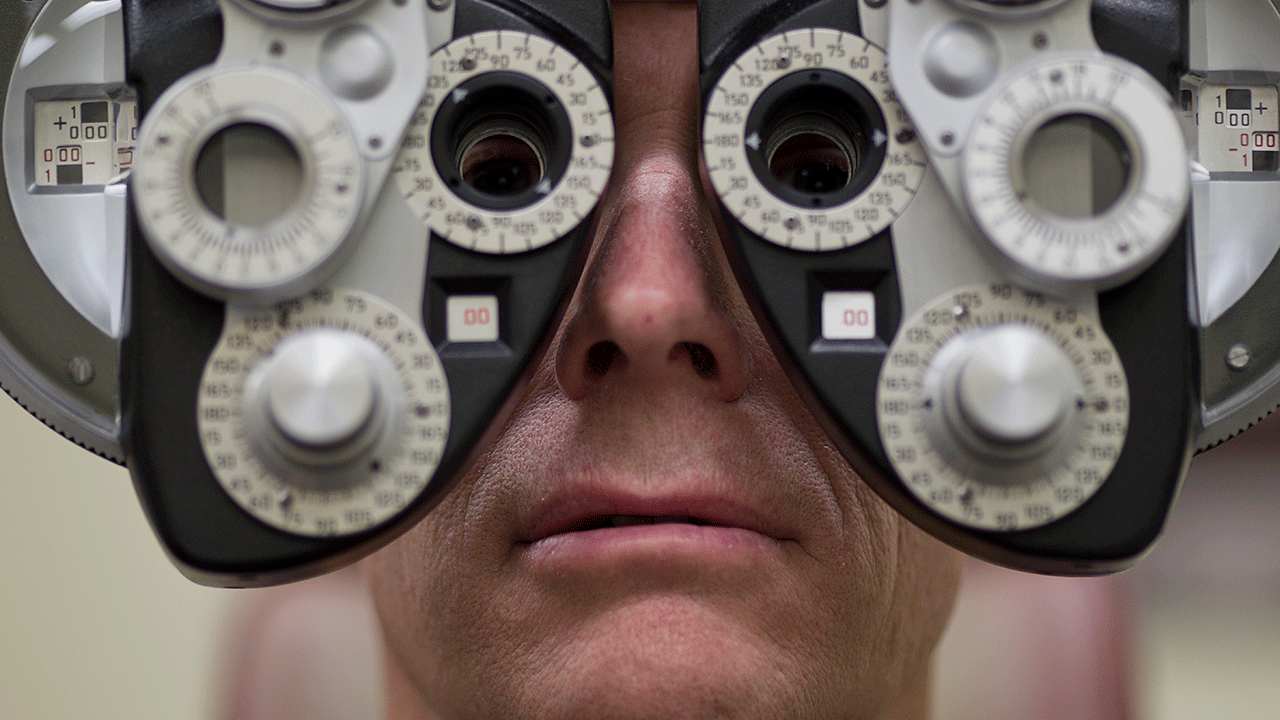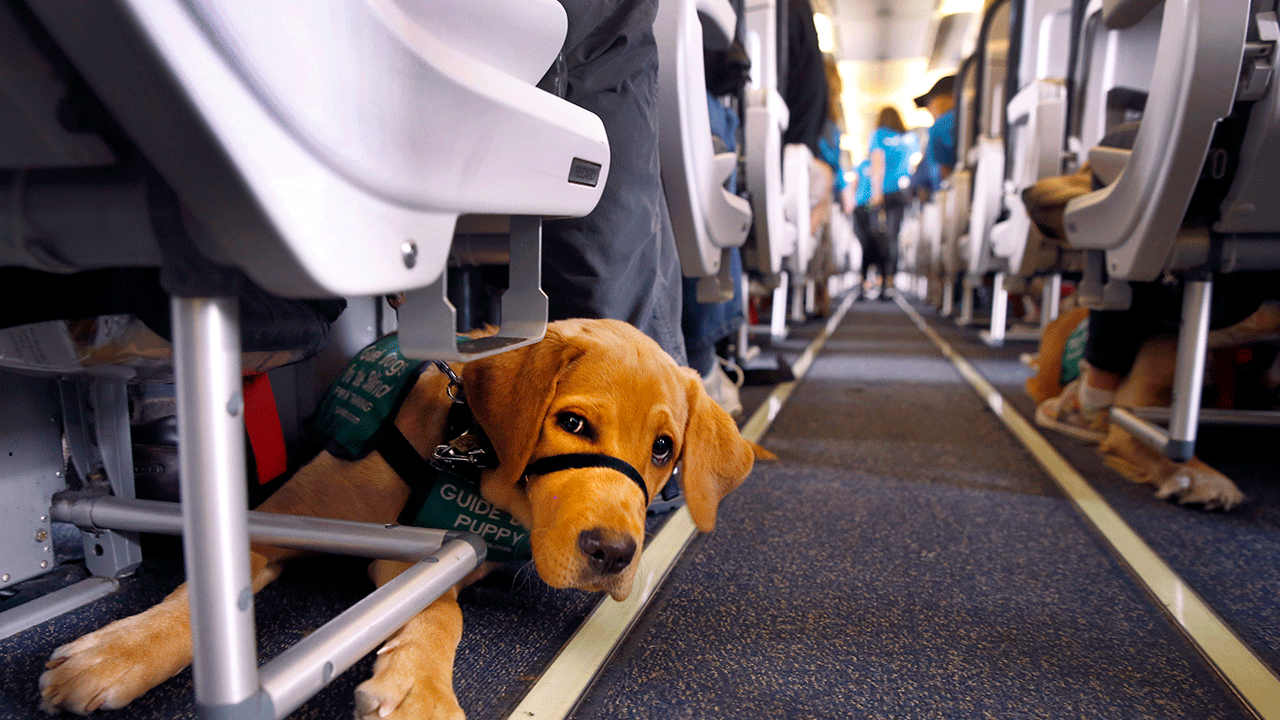[ad_1]
Vision loss can result from a number of different conditions, including refractive errors and cataracts.
There are 2.2 billion people around the world who live with near or distance vision impairment, according to the World Health Organization (WHO).
Certain types of vision loss can be partially treated or cured, while others have no treatment options.
EYE DROPS AND SAFETY ISSUES: HERE’S WHAT YOU NEED TO KNOW NOW
An individual experiences vision loss when eyesight cannot be corrected to a normal level, even with the help of corrective lenses.
Below is everything you need to know about vision loss and how you can support someone who has impaired vision.

There are several different types of vision loss that can develop throughout a person’s life. (iStock)
- What is vision loss?
- What are examples of impaired vision?
- What are causes of vision loss?
- Can vision loss be cured?
- Can I reduce my risk of vision loss?
- How do I deal with vision loss?
- How can you best support someone who is visually impaired?
1. What is vision loss?
Vision loss occurs when a person’s eyesight cannot be corrected to a normal level, even with corrective lenses.
There are several different types of blindness. Someone who experiences partial blindness still retains some vision, but it is very limited. A person with complete blindness can’t see or detect light. Congenital blindness refers to someone who is visually impaired at birth. Legal blindness is identified when someone has central vision of 20/200 or worse in their best eye, with the help of corrective glasses or contacts.
CALIFORNIA WOMAN’S BLINDNESS IS HELPING TO CHANGE HER BODY CONFIDENCE FOR THE BETTER, SHE SAYS
Lastly, there is nutritional blindness, which refers to someone who experiences vision loss due to a vitamin A deficiency.
Symptoms of vision loss may include blurry vision, pain in the eyes, sensitivity to light and a sudden loss of vision.

Someone who has vision loss is unable to improve vision to a normal level, even with the help of corrective lenses. (iStock)
2. What are examples of impaired vision?
There are many different examples of impaired vision. Loss of central vision is when peripheral vision remains intact, but a blur or blind spot is in the way of central vision.
Alternatively, loss of peripheral vision is when an individual can’t see anything to her sides or one side.
Blurred vision (refractive errors) occurs when, even with corrective lenses, a person is unable to see details at any distance.
VISION PROBLEMS COULD MEAN HIGHER DEMENTIA RISK, STUDY FINDS: ‘EYE HEALTH AND BRAIN HEALTH ARE CLOSELY LINKED’
Some people experience extreme sensitivity to light. This is when even normal levels of light overwhelm a person’s sight. A person with this type of vision loss could experience pain or discomfort.

An individual who has impaired vision due to sensitivity to light could experience pain and discomfort. (iStock)
Night blindness occurs when a person can’t see during the dark of night or in a dimly lit room.
3. What are causes of vision loss?
The leading causes of vision loss are refractive errors and cataracts, according to WHO. Although these are the most common causes, diabetic retinopathy, glaucoma and age-related macular degeneration are others.
Strabismus (crossed eyes), commonly seen in younger people, can cause vision loss but can be caught and treated early. Amblyopia (lazy eye) is another cause of vision loss and occurs when the brain and the eyes do not work in sync.
People with Type 1 or Type 2 diabetes are at increased risk of vision loss, as they can experience diabetic retinopathy. Diabetic retinopathy is caused by damage to blood vessels in the retina.
There are different types of glaucoma that cause vision loss by damaging the optic nerve. Vision loss from glaucoma cannot be corrected but can be slowed or stopped.

Make sure to get regular eye exams to reduce the risk of vision loss. (Smiley N. Pool/Houston Chronicle via Getty Images)
4. Can vision loss be cured?
There is no cure for blindness, but there are certain treatments that can be used for certain individuals depending on the cause of their vision impairment and how far progressed they are.
CLICK HERE TO SIGN UP FOR OUR LIFESTYLE NEWSLETTER
Common treatments for vision loss are laser therapies, correction surgeries, stem cell therapies and use of eye drops.
5. Can I reduce my risk of vision loss?
There are ways that may reduce the risk of vision loss in the future. Things that you can do to reduce your risk are having yearly eye exams done, wearing protective eye gear when necessary, maintaining a healthy diet, exercising often and avoiding smoking.
CLICK HERE TO GET THE FOX NEWS APP
It is also helpful to know about any eye issues that are in your family and wash hands often to avoid eye infections.
6. How do I deal with vision loss?
Dealing with vision loss can be challenging. There are adjustments you can make to your day-to-day life that can help make the transition easier.
Most importantly, be open to talking about your feelings with your family and friends. If you need to, don’t hesitate to seek out counseling to help you adjust to your diagnosis.

If you see a guide dog assisting someone who is visually impaired in public, do not attempt to pet or distract the working dog. (Paul Chinn/The San Francisco Chronicle via Getty Images)
Look into different vision aids available to you that could be beneficial. Examples of aids for the visually impaired include telescopic glasses, light-filtering lenses, magnifying glasses and electronic glasses. There are also phone apps that may help with day-to-day tasks, Braille readers, large-print publications and audiobooks and talking watches and clocks.
7. How can you best support someone who is visually impaired?
To support someone close to you who is visually impaired, be someone they can talk to and rely on for support. Make them aware of all the resources available to them. Help them with any tasks with which they may need assistance.
When speaking with someone who is blind, be sure to identify yourself, be detailed when describing things and use their name when addressing them.
If you see someone who is blind that needs assistance, ask if they need any help, but also be respectful of their wishes if they do not want your help. If you come in contact with someone who uses a guide dog, do not pet or attempt to distract the dog. They are working, and their priority is to help the individual who is blind.
For more Lifestyle articles, visit www.foxnews.com/lifestyle.
 FARRATA NEWS Online News Portal
FARRATA NEWS Online News Portal






